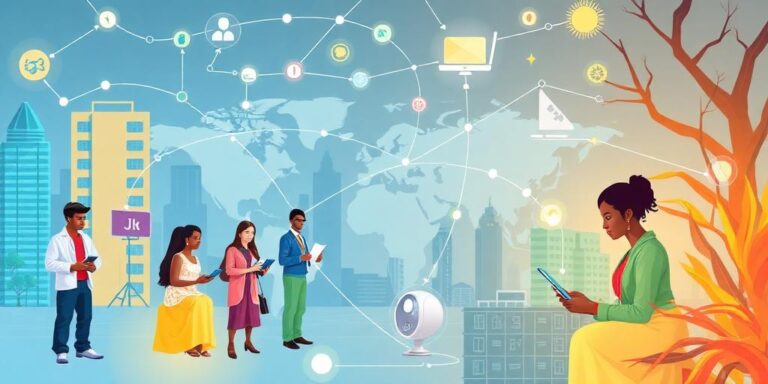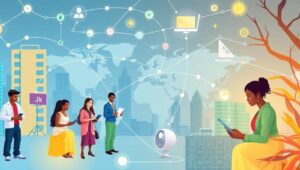Addressing the Digital Divide in IoT Access and Benefits (2026)
The Internet of Things (IoT) has permeated numerous aspects of modern life, promising increased efficiency, convenience, and innovation. However, the benefits of IoT are not universally accessible. The digital divide, characterized by unequal access to technology and the internet, poses a significant barrier to the widespread adoption and equitable distribution of IoT benefits. This article examines the challenges, explores potential solutions, and envisions the landscape of IoT access in 2026.
Understanding the Digital Divide in IoT
The digital divide manifests in several dimensions:
- Infrastructure: Lack of reliable internet connectivity in rural and underserved areas limits IoT deployment.
- Affordability: The cost of IoT devices, data plans, and related services can be prohibitive for low-income households.
- Skills and Literacy: Insufficient digital literacy skills hinder the ability to use and benefit from IoT technologies.
- Awareness: Lack of awareness about the potential benefits of IoT can limit adoption, even when access is available.
These factors collectively contribute to a disparity where certain segments of the population are excluded from the advantages that IoT offers, exacerbating existing inequalities.
Challenges in Bridging the Gap
Several challenges impede efforts to bridge the digital divide in IoT:
- Investment Costs: Expanding internet infrastructure to underserved areas requires substantial capital investment.
- Sustainability: Ensuring the long-term sustainability of connectivity solutions in low-income communities is crucial.
- Data Privacy and Security: Addressing concerns about data privacy and security is essential to build trust and encourage adoption.
- Policy and Regulation: Developing appropriate policies and regulations to promote equitable access to IoT is necessary.
Potential Solutions and Strategies
To effectively address the digital divide in IoT, a multi-faceted approach is required:
- Public-Private Partnerships: Governments and private companies can collaborate to invest in infrastructure and provide affordable connectivity solutions.
- Community-Based Initiatives: Local organizations can play a vital role in providing digital literacy training and promoting awareness of IoT benefits.
- Subsidized Access Programs: Government subsidies can help low-income households afford IoT devices and data plans.
- Open-Source Technologies: Leveraging open-source platforms and technologies can reduce the cost of IoT deployment.
- Education and Training: Targeted education and training programs can equip individuals with the skills needed to use and benefit from IoT technologies.
IoT Access and Benefits in 2026: A Vision
By 2026, significant progress can be made in bridging the digital divide in IoT. This vision includes:
- Widespread Connectivity: Affordable and reliable internet access is available in most areas, enabling widespread IoT deployment.
- Increased Adoption: More individuals and communities are actively using IoT technologies to improve their lives.
- Equitable Distribution of Benefits: The benefits of IoT, such as improved healthcare, education, and economic opportunities, are more equitably distributed across society.
- Empowered Communities: Individuals are empowered to use IoT technologies to address local challenges and improve their quality of life.
Conclusion
Addressing the digital divide in IoT is essential to ensure that the benefits of this transformative technology are shared by all. By investing in infrastructure, promoting digital literacy, and developing appropriate policies, we can create a future where IoT empowers individuals and communities, regardless of their socioeconomic status or geographic location. The year 2026 presents an opportunity to realize this vision and build a more inclusive and connected society.




